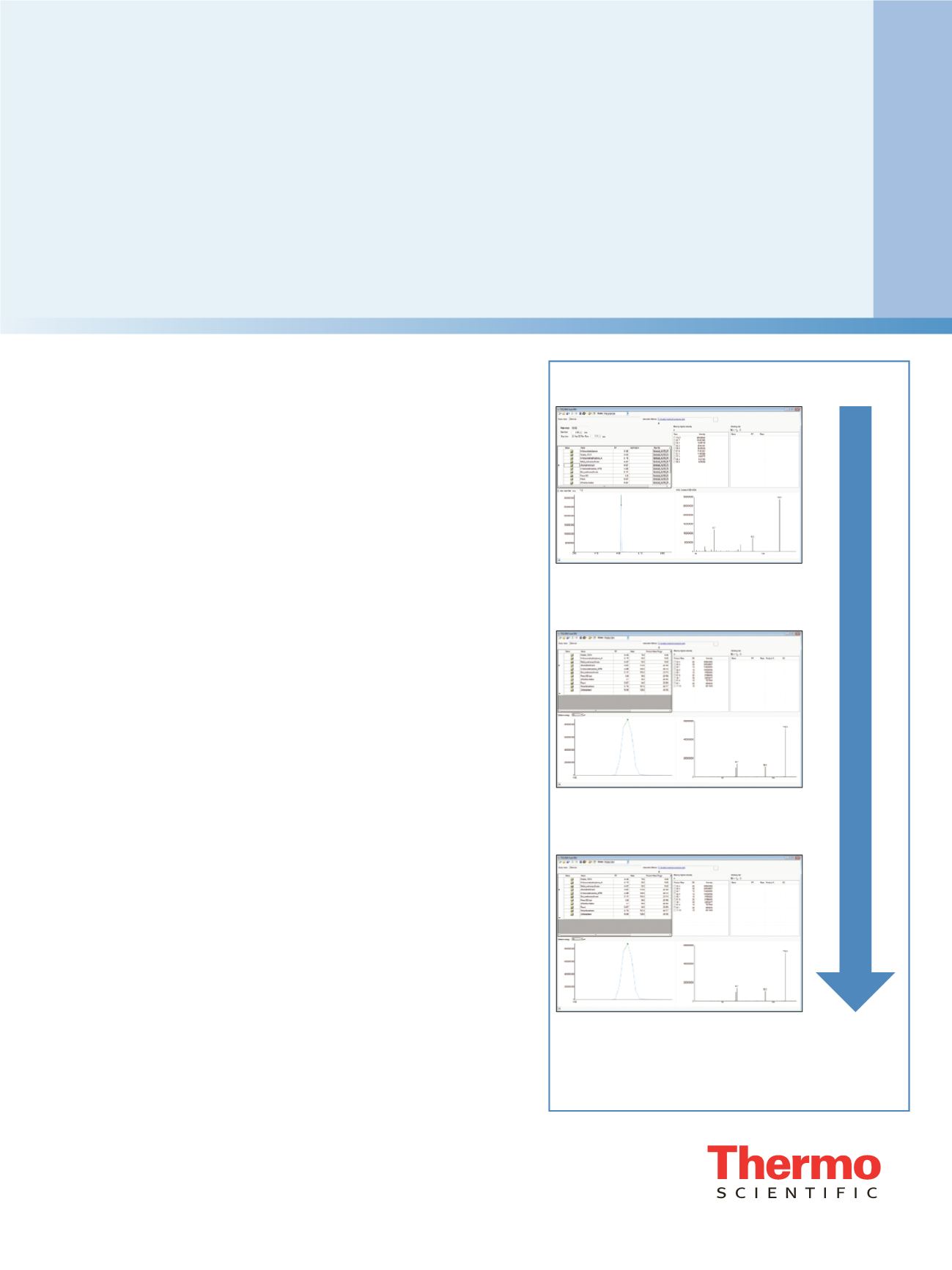
Introducing AutoSRM
MRM Simplicity for High Performance Results
Application Brief 52298
Overview
The advantages of selected reaction monitoring (SRM)
and multiple reaction monitoring (MRM) analyses are
often accompanied by some challenges, especially with
respect to the adoption of these methods in the laboratory.
These challenges can be due to the complexity of the mass
spectrometer setup and optimization. Laboratories that
want to realize the benefits of MS/MS must overcome
some barriers in the tuning, setup and optimization to
reduce the lead time to get into routine production.
The Thermo Scientific TSQ 8000 GC-MS/MS system was
built with simplicity as a priority. Whether you are
starting with a completely new analysis, transferring a
method from a single quadrupole GC-MS to a triple
quadrupole GC-MS, or porting a known MRM method
from another instrument, the TSQ
™
8000 GC-MS/MS
system ensures the fastest route to high performance
SRM results.
AutoSRM Studies
AutoSRM is comprised of a three-step process. These
steps are called studies:
• Step 1: Precursor Ion Study
• Step 2: Product Ion Study
• Step 3: SRM Optimization Study
Step 1: Precursor Ion Study
The purpose of this first step is to select your precursor
ions. To start this study, name your compounds and enter
your vial numbers. AutoSRM will signal your TSQ 8000
system to run a full scan analysis on the compounds in
your standards.
Along with your chromatographic peak and your product
ion spectra, you are presented with a table of the most
intense product ion masses to select. If desired, AutoSRM
can automatically pick them up for you.
Figure 1. AutoSRM is the first step in creating an SRM method
from scratch. AutoSRM can also be used for SIM method
development and to optimize an existing SRM method (for
instance with a new collision gas).
Step 1:
Select your precursor ions from a full scan
Step 2:
Select your product ions from product ion scans
Step 3:
Optimize the collision energy for selected transitions
AutoSRM Workflow


